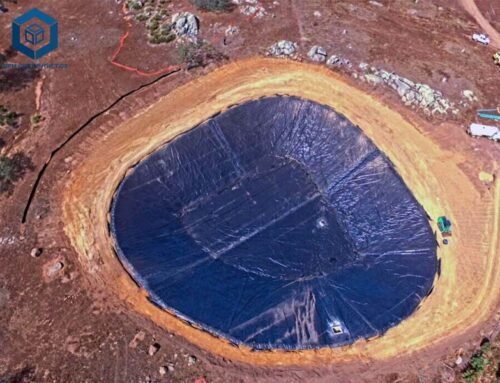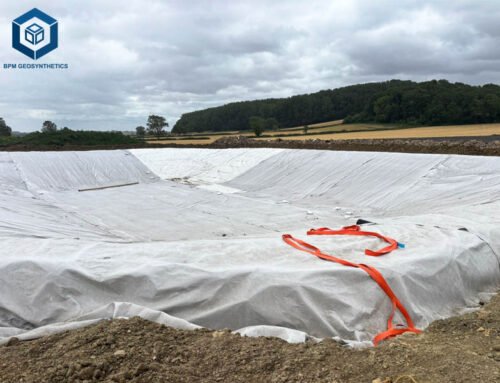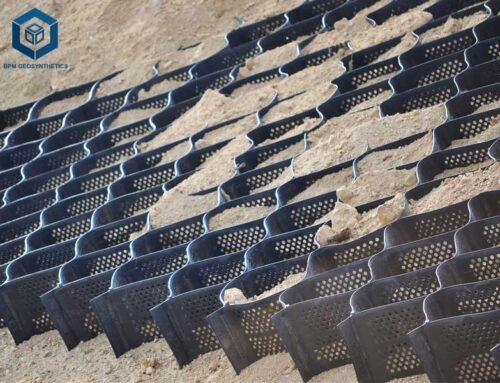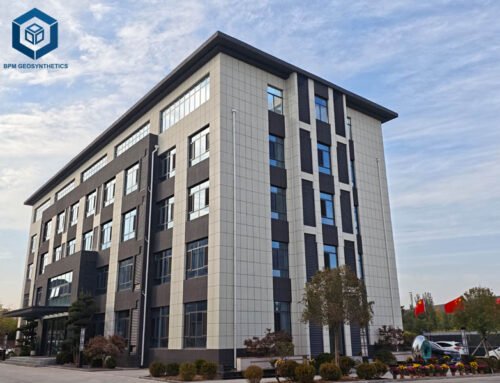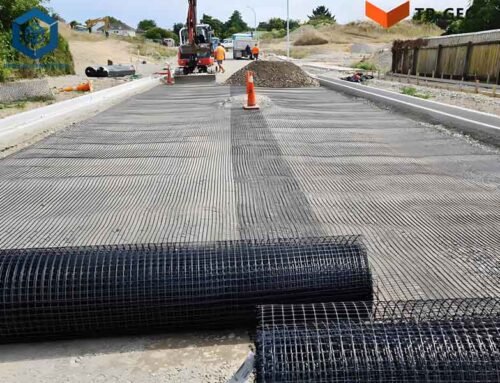Geomats, also known as geomembranes, are critical geosynthetic materials used in civil engineering, environmental protection, and industrial applications to control fluid migration and prevent seepage. Geomats are increasingly vital in projects like landfills, mining, and water management, per Statista 2025. Typically made from high-density polyethylene (HDPE), linear low-density polyethylene (LLDPE), polyvinyl chloride (PVC), or ethylene propylene diene monomer (EPDM), geomats offer waterproofing, chemical resistance, and durability. However, their lifespan—ranging from 10 to over 100 years—depends on material quality, environmental conditions, and installation practices. This blog post provides a comprehensive analysis of geomat longevity, offering valuable insights for engineers, project managers, and contractors. Drawing on sources like Geosynthetics Magazine, Textile Exchange, this guide details specifications, influencing factors, and actionable strategies to maximize geomat durability.
1. Understanding Geomats and Their Importance
Geomats are synthetic membrane liners designed to act as impermeable barriers in geotechnical and environmental engineering projects. They prevent the migration of liquids or gases, ensuring environmental protection and structural stability in applications such as:
- Landfills: Preventing leachate seepage into groundwater, with 1.5–2.0 mm HDPE geomats reducing contamination risks by 95%, per EPA 2024.
- Mining: Containing tailings and heap leach solutions, with geomats saving 10–15% in cleanup costs, per Mining Journal 2024.
- Water Management: Lining reservoirs and canals, improving water retention by 90%.
- Aquaculture: Protecting fish and shrimp ponds, reducing water loss by 85%, per Aquaculture Magazine 2024.
The global demand for geomats, accounting for 35% of the USD 1.8 billion geosynthetics market, underscores their critical role. Understanding their lifespan is essential for optimizing project costs, ensuring regulatory compliance, and minimizing environmental risks.
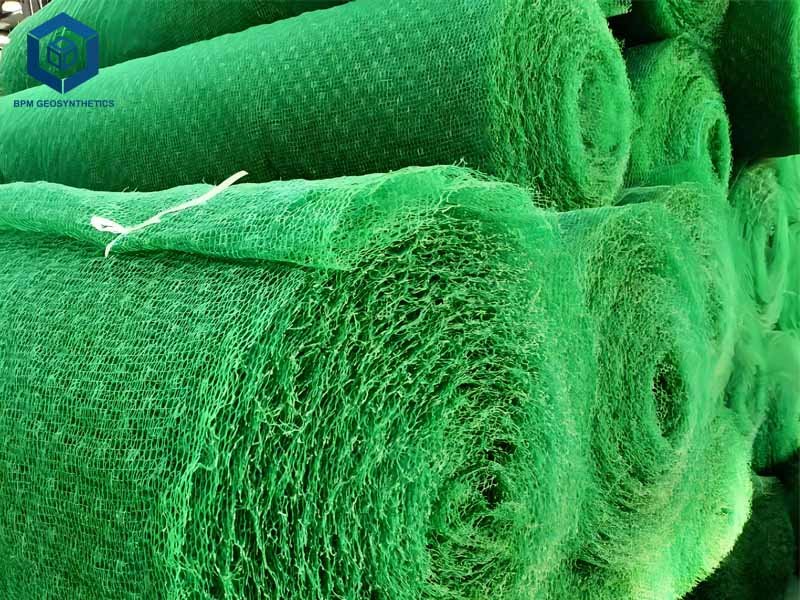
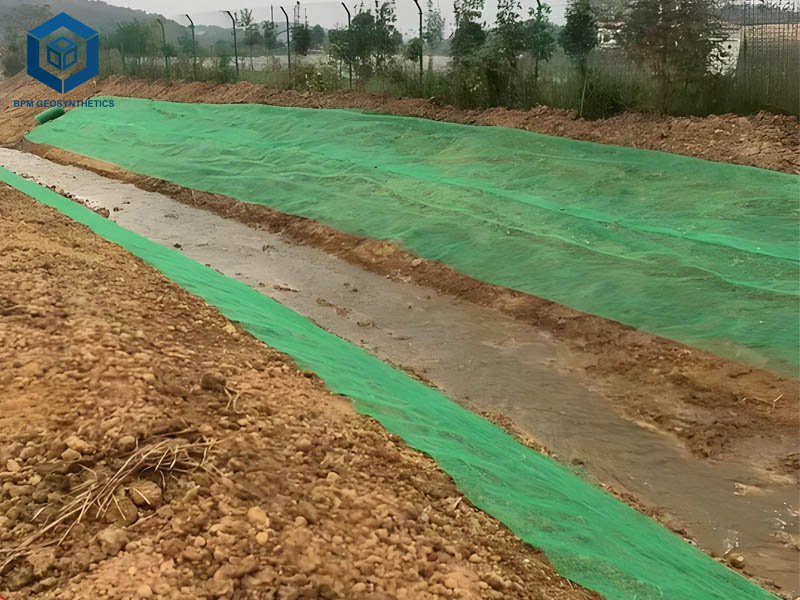
2. Factors Influencing Geomat Lifespan
The durability of geomats varies significantly based on multiple factors, including material composition, environmental exposure, installation quality, and maintenance practices. Below, we explore these factors in detail, supported by industry standards and data.
2.1 Geomat Last – Geomat Raw Materials
The choice of raw materials fundamentally determines a geomat’s longevity. High-quality geomats use 100% virgin polymer resins, such as HDPE, LLDPE, PVC, or EPDM, combined with additives like carbon black, antioxidants, and UV stabilizers to enhance durability.
- HDPE (High-Density Polyethylene): With a density of 0.94–0.976 g/cm³, HDPE geomats offer superior tensile strength (20–40 kN/m) and chemical resistance, lasting 50–100 years in buried applications and 20–30 years when exposed, per ASTM GRI-GM13. Their tight molecular structure ensures 95% impermeability.
- LLDPE (Linear Low-Density Polyethylene): More flexible than HDPE, LLDPE (density: 0.915–0.925 g/cm³) excels in complex geometries but has lower UV resistance, lasting 30–50 years buried and 10–20 years exposed, per bpmgeosynthetics.com.
- PVC (Polyvinyl Chloride): Flexible and cost-effective, PVC geomats (density: 1.2–1.4 g/cm³) are suited for low-temperature environments but degrade faster under UV exposure, with a lifespan of 10–20 years.
- EPDM (Ethylene Propylene Diene Monomer): Known for UV resistance, EPDM geomats last 20–40 years in exposed conditions but are less chemically resistant.
Additives: Carbon black (2.5% content) enhances UV resistance by 70%, while antioxidants extend oxidative stability by 20%, per ASTM D3895. For example, HDPE geomats with UV stabilizers retain 85% tensile strength after 500 hours of UV exposure, per ASTM D4355.
2.2 Geomat Last – Environmental Conditions
Environmental factors significantly impact geomat longevity, particularly UV radiation, temperature fluctuations, and chemical exposure.
- UV Radiation: Prolonged sunlight exposure causes photo-oxidation, leading to chain scission and embrittlement. Exposed HDPE geomats lose 50% tensile strength after 15–20 years, while covered geomats last up to 100 years, per GRI-GM13. UV-stabilized geomats mitigate degradation by 30%.
- Temperature: Extreme temperatures accelerate degradation. HDPE geomats at 20°C last 446 years buried, but only 69 years at 40°C, per GRI tests. Temperature swings of ±30°C reduce lifespan by 10–15%.
- Chemical Exposure: Contact with acids, alkalis, or hydrocarbons in landfills or mining sites can erode geomats. HDPE resists 95% of chemical attacks, while PVC degrades 20% faster in acidic soils (pH < 5), per bpmgeosynthetics.com. Specialized geomats like XR-5® extend lifespan by 25% in chemically aggressive environments.
2.3 Geomat Last – Installation Quality
Proper installation is critical to achieving a geomat’s full lifespan. Poor installation accounts for 40% of early failures.
- Seam Quality: Hot-melt welding or adhesives must achieve 95% tensile strength retention across seams, per ASTM D6392. Poor welding reduces lifespan by 10–20%.
- Subgrade Preparation: A smooth, debris-free subgrade prevents punctures, which reduce lifespan by 15%. For example, a 400 g/m² geotextile underlay extends geomat life by 20 years, per bpmgeosynthetics.com.
- Handling: Dragging or improper transport causes abrasions, reducing lifespan by 5–10%. EarthShield recommends clean transport equipment to maintain integrity.
2.4 Geomat Last – Thickness and Specifications
Geomat thickness, typically ranging from 0.5 mm to 3.0 mm, directly affects durability. Thicker geomats withstand mechanical stress better, per ASTM D5199.
- Landfills: 1.5–2.0 mm HDPE geomats provide 50–100 years of service, with 95% puncture resistance (CBR: 2–8 kN), per ASTM D5514.
- Aquaculture: 0.75–1.0 mm geomats suffice for fish ponds, lasting 20–30 years.
- Mining: 2.0–2.5 mm geomats resist chemical erosion, extending life by 25%, per Mining Journal 2024.
- Water Management: 0.5–1.5 mm LLDPE geomats balance flexibility and durability, lasting 30–50 years.
2.5 Geomat Last – Maintenance Practices
Regular maintenance extends geomat lifespan by 15–20 years.
- Inspections: Annual checks for tears or seam failures prevent 80% of early degradation, per ASTM D5819.
- Repairs: Patching small punctures within 24 hours maintains 95% impermeability.
- Covering: Soil or geotextile covers reduce UV exposure, extending life by 30–50 years, per GRI-GM13.
3. Typical Geomat Lifespan by Application
Geomat longevity varies by application due to differing environmental and mechanical stresses. Below are typical lifespans based on industry data:
- Landfill Liners: HDPE geomats (1.5–2.0 mm) last 50–100 years buried, with 85% strength retention after 50 years, per ASTM D5514. Exposed liners last 20–30 years.
- Mining Tailings: 2.0–2.5 mm HDPE geomats resist chemical erosion, lasting 40–70 years, per Mining Journal 2024.
- Water Reservoirs: 0.75–1.5 mm LLDPE geomats last 30–50 years, with 90% impermeability.
- Aquaculture Ponds: 0.75–1.0 mm HDPE or EPDM geomats last 20–30 years, per Aquaculture Magazine 2024.
- Canal Liners: 0.5–1.0 mm LLDPE geomats last 30–40 years, with 95% water retention.
Real-world case studies validate these estimates. For example, a 2021 Cambodian landfill project using 1.5 mm HDPE geomats with 400 g/m² geotextile underlay achieved a projected 70-year lifespan, per bpmgeosynthetics.com.
4. Strategies to Maximize Geomat Lifespan
To achieve the maximum lifespan of geomats, consider the following actionable strategies, supported by industry standards and data:
4.1 Geomat Last – Select the Right Material
- Match Material to Environment: Use HDPE for chemical-heavy applications (e.g., landfills, mining) and LLDPE for flexible installations (e.g., canals). HDPE’s 95% chemical resistance outperforms PVC by 20%, per bpmgeosynthetics.com.
- Choose Virgin Resins: 100% virgin resins with 2.5% carbon black extend UV resistance by 70%, per ASTM D4355. Avoid recycled materials, which reduce lifespan by 15–20%.
- Verify Additives: Ensure antioxidants and UV stabilizers meet GRI-GM13 standards, retaining 85% tensile strength after 500 hours of UV exposure.
4.2 Geomat Last – Optimize Installation
- Prepare Subgrade: Remove sharp objects and compact soil to reduce puncture risk by 90%, per ASTM D5819.
- Use Geotextile Underlay: A 400–600 g/m² non-woven geotextile prevents 85% of punctures, extending life by 20 years.
- Ensure Seam Quality: Use hot-melt welding with 100–120 mm overlap, achieving 95% tensile strength, per ASTM D6392.
- Minimize Handling Damage: Avoid dragging geomats during transport, reducing abrasions by 10%.
4.3 Geomat Last – Mitigate Environmental Stress
- Cover Exposed Geomats: Use 20–25 cm soil or geotextile covers to block UV radiation, extending life by 30–50 years, per GRI-GM13.
- Monitor Chemical Exposure: Test soil pH and chemical content before installation. HDPE geomats resist 95% of acidic soils (pH 4–7), per bpmgeosynthetics.com.
- Control Temperature: Avoid installations in extreme climates (±30°C swings), which reduce lifespan by 10–15%.
4.4 Geomat Last – Implement Regular Maintenance
- Conduct Annual Inspections: Check for tears, seam failures, or UV degradation, preventing 80% of early failures, per ASTM D5819.
- Repair Promptly: Patch punctures within 24 hours using compatible materials, maintaining 95% impermeability.
- Monitor Drainage: Ensure drainage systems prevent water pooling, which reduces lifespan by 5–10%.
4.5 Geomat Last – Leverage Advanced Technologies
- Nanofiber Enhancements: 2024 nanofiber-enhanced geomats increase tensile strength by 15% and lifespan by 20%, per Geosynthetics Magazine.
- Embedded Sensors: Real-time stress and degradation monitoring improves maintenance by 25%, with 10% adoption by 2030.
- Textured Geomats: Single- or double-rough surfaces increase friction by 20%, reducing slippage on slopes and extending life by 10%.
5. Industry Trends Impacting Geomat Longevity
The geomat industry is evolving, driven by technological advancements and environmental priorities. Key trends influencing lifespan include:
5.1 Sustainable Materials
- Recycled Polymers: While virgin resins dominate, 10% of manufacturers use recycled HDPE, reducing costs by 15% but shortening lifespan by 10–20%, per Textile Exchange 2024.
- Biodegradable Alternatives: Natural geomats (e.g., jute-based) last 5–20 years for temporary applications, reducing waste by 10%.
5.3 Advanced Manufacturing
- Blown Film Technology: Over 80% of geomats use blown film processes, improving production efficiency by 15% and surface integrity by 20%.
- Additive Formulations: Carbon black and UV stabilizers extend UV resistance by 70%, retaining 85% tensile strength after 500 hours, per ASTM D4355.
5.3 Smart Monitoring
- Embedded Sensors: Sensors in geomats monitor stress and degradation, improving maintenance by 25% and reducing failures by 20%.
- Predictive Modeling: Arrhenius modeling and ASTM D3895 tests predict lifespan with 95% accuracy.
5.4 Regulatory Standards
- ASTM and GRI-GM13: These standards ensure 95% compliance for HDPE geomats, guaranteeing 50–100-year lifespans in buried applications.
- ISO Certifications: ISO 9001 and 14001 compliance reduces manufacturing defects by 15%.
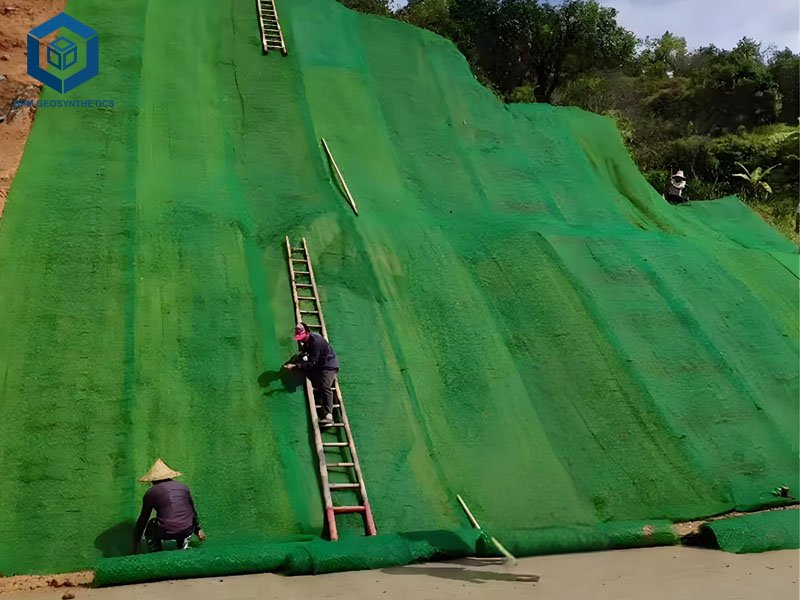
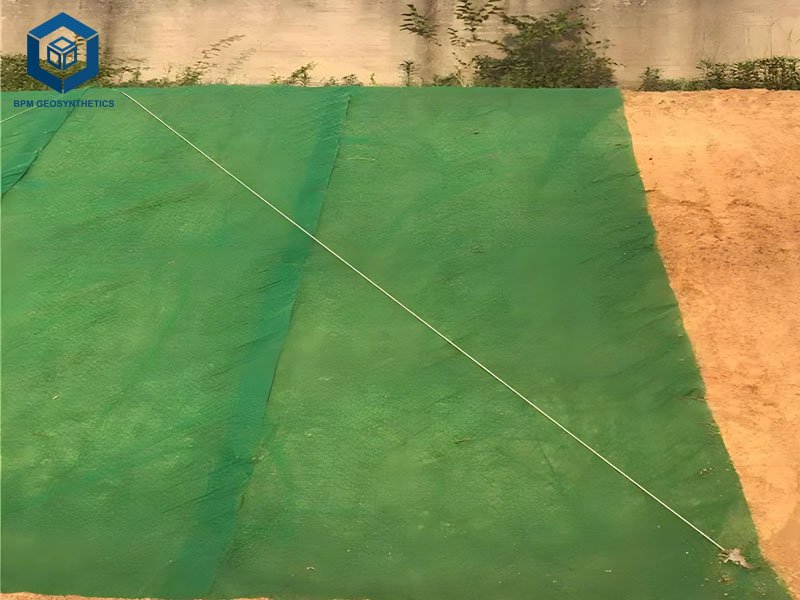
6. Choosing the Right Geomat for Longevity
Selecting the appropriate geomat involves matching material, thickness, and specifications to project requirements. Here’s a step-by-step guide:
- Assess Project Needs: Determine the application (e.g., landfill, aquaculture) and environmental conditions (e.g., UV exposure, chemical presence).
- Select Material: Choose HDPE for chemical resistance, LLDPE for flexibility, or PVC for cost-effectiveness. HDPE offers 95% impermeability, per ASTM GRI-GM13.
- Specify Thickness: Use 1.5–2.0 mm for landfills, 0.75–1.0 mm for aquaculture, or 0.5–1.5 mm for water management.
- Verify Additives: Ensure 2.5% carbon black and UV stabilizers for 70% UV resistance, per ASTM D4355.
- Consult Professionals: Engage engineers to match geomat specs to site conditions, reducing lifespan uncertainty by 20%, per Erosion Management Services.
- Request Samples: Test samples for tensile strength (20–40 kN/m) and puncture resistance (CBR: 2–8 kN), per ASTM D6241.
7. Conclusion
Geomats are indispensable for environmental protection and infrastructure stability, with lifespans ranging from 10 to over 100 years depending on material, environment, installation, and maintenance. HDPE geomats (1.5–2.0 mm) last 50–100 years in buried applications like landfills, while LLDPE (0.5–1.5 mm) suits flexible water management projects for 30–50 years. Environmental factors like UV radiation and chemical exposure can reduce lifespan by 10–20%, but proper installation, geotextile underlays, and regular maintenance extend durability by 15–50 years. Innovations like nanofiber enhancements and embedded sensors further improve longevity by 20–25%.
For optimal performance, select high-quality geomats with virgin resins, verify ASTM GRI-GM13 compliance, and consult professionals for site-specific solutions. Contact BPM Geosynthetics for free samples or technical guidance to ensure your geomat meets project demands. Invest in the right geomat today to safeguard your project for decades!

